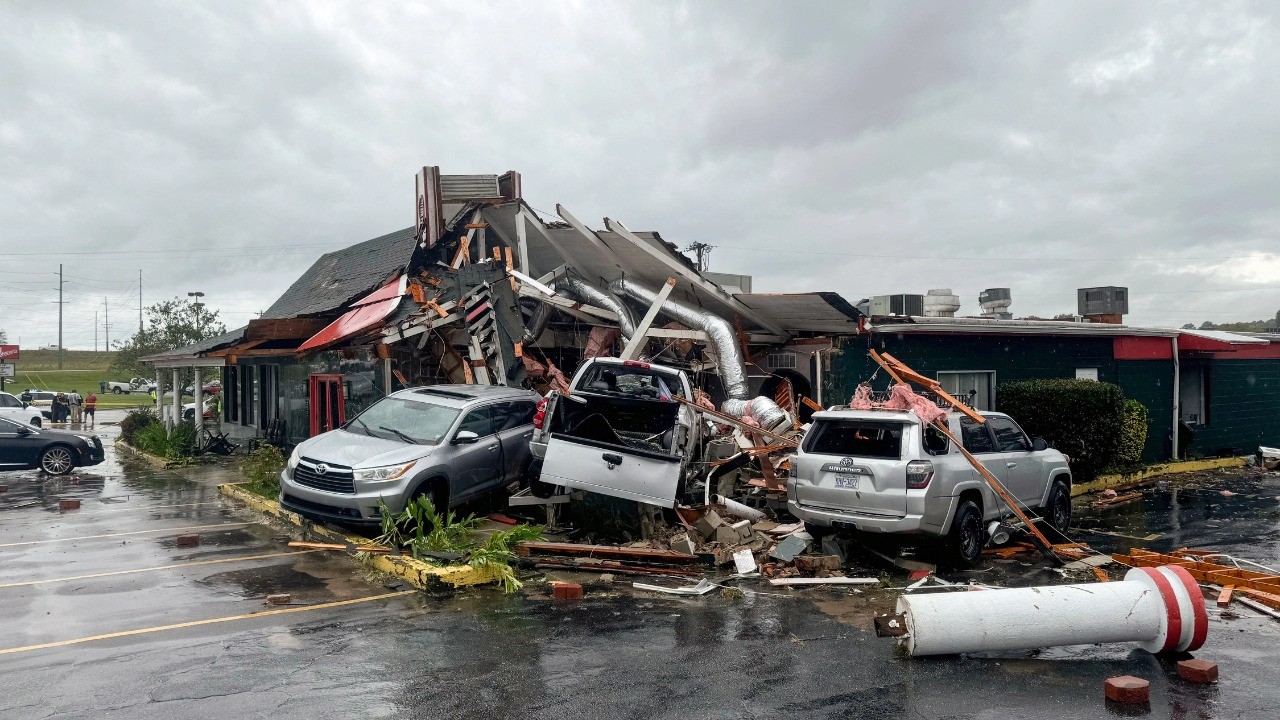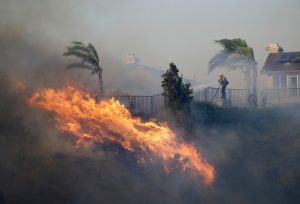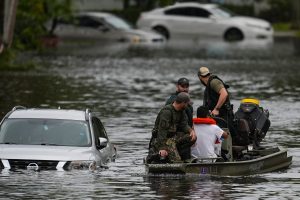Tornadoes, Power Outages, and Devastation: Hurricane Milton’s Massive Damage Toll in Florida
USA NEWS – Hurricane Milton tore through Florida on Thursday, unleashing tornadoes, damaging homes, and leaving more than 3 million people without power. The storm, which made landfall on Florida’s west coast as a Category 3 hurricane, caused significant damage but spared the Tampa Bay area from the catastrophic flooding many had feared.
Storm’s Impact on Florida’s West Coast
Milton hit Florida’s Siesta Key late Wednesday with sustained winds of 120 mph (205 kph), downing trees, damaging buildings, and sparking flash floods. Despite initial fears of severe flooding in Tampa Bay, water levels remained below expectations, according to Tampa Mayor Jane Castor, who said the damage was less severe than the devastation caused by Hurricane Helene just two weeks earlier.
Governor Ron DeSantis expressed relief that Tampa Bay, with a population of 3 million, avoided the worst of the storm’s impact. However, parts of the region were not unscathed. The roof of Tropicana Field, home to the Tampa Bay Rays, was torn open, and a construction crane collapsed in St. Petersburg.
Deadly Tornadoes and Widespread Destruction
The storm triggered at least 19 tornadoes across the state, with St. Lucie County on the east coast hit particularly hard. Two deaths were reported in a retirement community in Fort Pierce following a suspected tornado, and approximately 100 homes were destroyed in the area. Governor DeSantis reported that around 125 mobile homes across various counties were also obliterated.
Residents of Fort Myers faced severe destruction as well, with tornadoes tearing roofs off homes and leaving neighborhoods littered with debris. One resident, Connor Ferin, described the terrifying experience of a tornado ripping through his home: “It was over in less than a minute, but everything was destroyed.”
Millions Without Power, Airports Paralyzed
Power outages swept across Florida, with over 3 million homes and businesses in the dark. Utilities struggled to keep up with the widespread damage, as 50,000 electricity workers were deployed to restore power. More than 2,200 flights were canceled across the country, with airports in Orlando, Tampa, and southwest Florida being the hardest hit.
Rescue and Relief Efforts Underway, The Federal Emergency Management Agency (FEMA) mobilized millions of gallons of water, meals, and supplies to assist those affected by the hurricane. Governor DeSantis said over 9,000 National Guard members were on the ground, prepared to aid in rescue and recovery operations. Search-and-rescue teams were deployed as soon as conditions allowed, with crews working through the night in some areas.
Evacuations and Gas Shortages, Ahead of Hurricane Milton’s landfall, more than 2 million people were ordered to evacuate. Gas shortages were reported across the state as evacuees jammed highways in a rush to escape the storm’s path. By Thursday, nearly a quarter of Florida’s gas stations had run out of fuel.
Tampa Zoo Takes Precautions, While people fled the storm, Tampa’s zoo took precautions to protect its animals, including African elephants, Caribbean flamingos, and pygmy hippos. Staff worked around the clock to ensure the safety of the animals as the hurricane passed through the region.
Aftermath and Long-Term Damage
As Hurricane Milton moves away from Florida, it is expected to cause billions of dollars in damage. The storm comes just two weeks after Hurricane Helene devastated parts of the southern U.S., further stretching state and federal resources. Cleanup efforts from Helene were still ongoing when Milton hit, with trucks working around the clock to clear debris before it could become dangerous in the storm’s high winds.
Despite the challenges ahead, Governor DeSantis and FEMA officials assured residents that recovery efforts would not be hindered by the back-to-back hurricanes. The full extent of the damage will become clearer in the coming days as rescue and recovery operations continue across the state.



